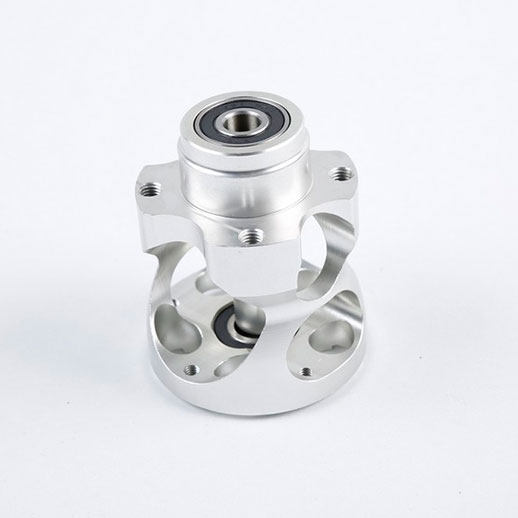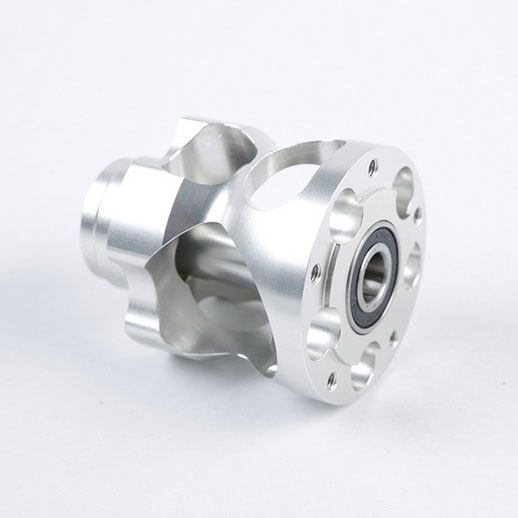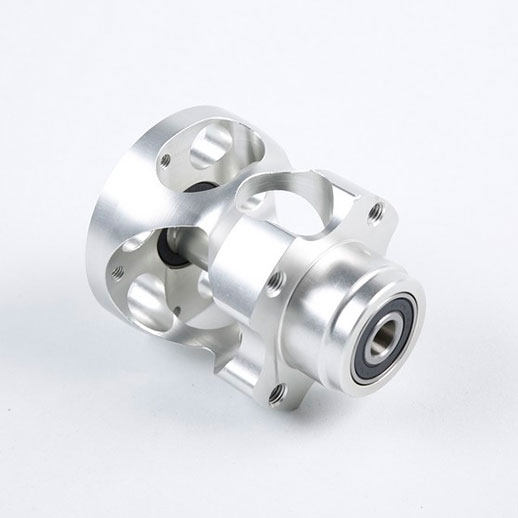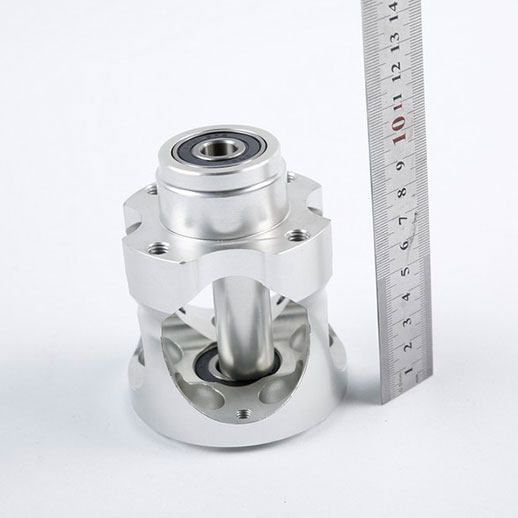CNC Machining Parts Al6061-T6
- Identification of Product: P002
- Size: 82*100*30(mm)
- Material: Al6061-T6
- CNC machining Process: Raw material → CNC Milling → CNC Drilling → Anodized → Assembly
- Surface Treatment: Natural Anodizing
- Weight: 0.49KG
- Features: complex structure, easy to deform, high requirements for product concentricity; mainly used in the field of robotics
Description
- CNC turning material – Al6061-T6 aluminum alloy rod.
A6061-T6 is aluminum, magnesium, silicon alloy, gold, and is a heat-treated corrosion-resistant alloy. The strength and corrosion resistance are quite different, and the uniformity is better. 6061 T6 high strength, high hardness (up to HV90 degrees), good processing effect, good anodized effect. No trachoma pores, good flatness. Improve processing efficiency and reduce material cost.
Aluminum alloy 6061 compositions:
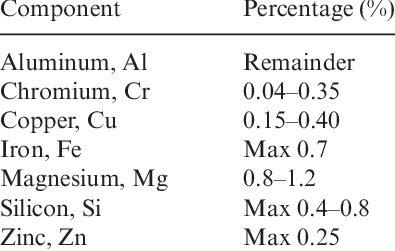
- 6061 Features: Tensile strength: 105-290Mpa, yield strength 85-240Mpa, elongation 8-16%.
- Equipment – three-axis CNC machine, CNC lathe, four-axis CNC machine, hydraulic sawing machine, 10T hydraulic machine.
- Cutting tools – Sandvik CNC turning tools, blades, precision boring tools and extended anti-vibration milling cutter alloy bits, taps, etc.
- Machining process – on-demand blanking → CNC lathe roughing → CNC four-axis roughing → product aging treatment → CNC lathe finishing → CNC three-axis machining → CNC four-axis finishing → edge burr treatment.
- Testing tools and equipment – three-coordinate, digital display vernier caliper, digital display depth gauge, outer diameter micrometer, inner diameter micrometer, imager.
The selection of CNC turning tools is carried out in the state of human-computer interaction of CNC programming.
The tool and tool holder should be correctly selected according to the processing capacity of the CNC machine tool, the performance of the workpiece material, the processing procedure, the cutting amount, and other related factors.
The principle of tool selection for CNC turning is easy installation and adjustment, good rigidity, high durability, and precision. On the premise of meeting the processing requirements, try to choose a shorter tool holder to improve the rigidity of tool processing.
- Surface finishing treatment – natural anodizing, film thickness 20μm.
Structure and properties of the oxide film of anodized aluminum plate:
The anodic oxide film consists of two layers, a porous thick outer layer is grown on a dense inner layer with dielectric properties, the latter is called the barrier layer (also called the active layer).
Observation with an electron microscope shows that almost all the longitudinal and transverse planes of the film layer are tubular holes perpendicular to the metal surface, which penetrate through the outer layer of the film to the barrier layer at the interface between the oxide film and the metal. With each pore as the main axis, dense alumina forms a honeycomb hexagonal body, called a unit cell, and the entire film layer is composed of countless such unit cells.
The barrier layer is composed of anhydrous alumina, which is thin and dense, has high hardness, and prevents the passage of current. The thickness of the barrier layer is about 0.05 μm, which is 0.5%-2.0% of the total film. The porous outer layer of the oxide film is mainly composed of amorphous alumina and a small amount of hydrated alumina, and also contains cations of the electrolyte.
When the electrolyte is sulfuric acid, the sulfate content in the membrane layer is normally 13%-17%. Most of the good properties of oxide films are determined by the thickness and porosity of the porous outer layer, which is closely related to the anodizing conditions.
- Assembly – 10T adjustable press for bearing press assembly.
- Packing – 5-layer corrugated paper outer box + bubble bag + pearl sponge.


